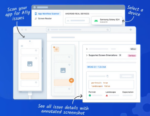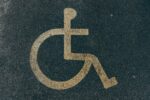Web technology and accessibility has always been an on-and-off affair, said Don Vu, a sight-impaired accessibility technology specialist. So, to him, the availability of new open-source tooling for developers to more easily and quickly test applications for accessibility is a step in the right direction.
Accessibility, defined as being capable of being reached, used or seen, is an issue for a large population of impaired people worldwide. That’s especially true when it comes to using Web 2.0-style rich interactive websites, where a simple screen reader doesn’t solve the problems.
Two of the groups tackling this problem are the World Wide Web Consortium and the OpenAjax Alliance (OAA).
The W3C created a set of specifications, called the Web Content Accessibility Guidelines version 2.0, designed to let tools and frameworks integrate structural design pattern analysis into Web pages to make sure that assistive technologies, like screen readers, can keep up with rich Web applications. The OAA, in turn, is creating tools to help Web developers make sites that adhere to those guidelines.
To ensure consistent adherence to the W3C’s WCAG 2.0 specifications, developers writing accessibility-checking tools can use the OAA’s JavaScript rule sets, explained Mike Squillace, co-chair of the OAA Accessibility Tools Task Force, and an IBM Human Ability and Accessibility Center software engineer.
“They no longer need to write their own code, which is just their own interpretation of these guidelines,” he said. “The guidelines are not what’s being standardized; it’s [the developer’s] understanding or interpretation that is.”
Once the tooling technology is implemented, “It ‘crawls’ or reviews the developer’s application or Web author’s content to make sure the page is in compliance as they’re creating it. If something isn’t correct, the tool tells the developer where changes need to be made, in real time,” Squillace said.
A working example of this type of tool is the University of Illinois’ Firebug Accessibility Inspector, a tool developed to evaluate the accessibility of websites and Web applications, said Jon Gunderson, a current participant in the WCAG project. He is also coordinator of assistive communication and information technology accessibility at the University of Illinois at Urbana-Champaign.
Through his work, Gunderson has found the biggest problem with accessibility to rich Web 2.0 applications is the lack of correctly labeled form controls. As an example, “This is especially troublesome for sighted users because labeled form controls is code [or metadata] that allows a screen reader to speak the name, city and address of something,” he said.
Previous technology was primarily centered on static HTML pages, Gunderson said. But in the last four or five years, the Web has become a much more dynamic place, and this technology is a means to make sure Accessible Rich Internet Applications (ARIA) is implemented best.
ARIA is a technical specification that defines ways developers can make Web content and applications more accessible, especially with dynamic content and advanced user interface controls developed with AJAX, HTML, JavaScript and related technologies.
However, Vu said, the reality of all this accessibility technology is that developers and programmers are not encouraged to use these tools and are pressured to get things up on the Web quickly.
To Vu, interaction with developers and the disabled community is what’s key. “The bottom line is [developers] can implement the accessibility tools, but unless they have actual users that test A to B, it’s not quite the same. We need to let them know about the user experience and how their programs actually affect us in the real world,” he said.





